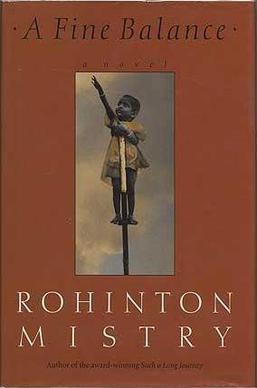
The novel is a complex, magnificient, hurting story told in the best tradition of 19th century realism, Rohinton Mistry continues to write about how little individual agency counts in a national emergency and how brutally personal initiative is suppressed by caste imperatives. In writing about the defeat of Ishwar and Omprakash, the chamar tanners turned caste-violating tailors; of Dina Dayal, the Parsi widow in search of economic autonomy; of Maneck Kohlah, the student from the hills hungry for existential answers; Mistry captures the overwhelming forces of history and caste, of politics and patriarchy, of coicidence and destiny that combine to break the human spirit in its quest for value, for betterment, for nobility.
Set in mid-1970s India, 'A Fine Balance' is a subtle and compelling narrative about four unlikely characters who come together in circumstances no one could have foreseen soon after the government declares a 'State of Internal Emergency'. It is a breathtaking achievement: panoramic yet humane, intensely political yet rich with local detail; and above all, compulsively readable.
Happy Reading:)
